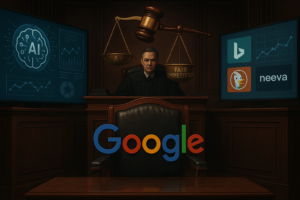Unveiling the Truth Behind AI-Generated UFO Videos
In recent times, a video making rounds on social media purportedly showcasing a UFO crash in a farmer’s field has piqued the interest of many. With UFO sightings often shrouded in mystery and intrigue, it’s no wonder such videos quickly go viral. However, this particular clip has been debunked, revealing the powerful hand of artificial intelligence behind its creation.
The video in question, initially believed by some to be authentic, was identified as the work of a digital creator known as @sybervisions, who specializes in visual effects and surreal scene creation. The artist cleverly uses generative AI, a rapidly advancing field within artificial intelligence that can produce highly convincing images and videos from textual descriptions.
Generative AI Tools
Generative AI platforms such as:
- MidJourney
- DALL-E
- Stable Diffusion
have become household names, known for their ability to transform simple prompts into stunning digital visuals. These tools leverage machine learning techniques to interpret language inputs and render them into images that can be both fantastical and disturbingly real. In this instance, the video’s UFO was an artistic interpretation rather than an extraterrestrial encounter.
The Dual-Edged Sword of AI Technology
The viral video illustrates the dual-edged sword of AI technology. On one hand, AI serves as a powerful tool for artists and creators, providing them with unprecedented means to express their creativity. On the other, it poses significant challenges in distinguishing between real and fabricated content. The case of the UFO video underscores the importance of digital literacy and critical evaluation skills as AI-generated content becomes more prevalent.
Fact-checkers and digital literacy campaigns are more crucial than ever, as they help mitigate misinformation spread by such realistic yet false representations. In this scenario, inconsistencies in the video, such as irregularities in the depiction of people and the UFO’s appearance, were key indicators of its AI origins. These anomalies, commonly found in AI-generated content, serve as tell-tale signs for discerning viewers.
Implications and Ethical Considerations
As AI technology continues to develop, so too does its capacity to blur the lines between reality and fiction. This raises important ethical and societal questions about the potential misuse of AI in propagating false information and the responsibilities of creators and platforms in managing such content.
While the allure of AI-generated art is undeniable, it’s imperative for consumers to approach such material with a healthy dose of skepticism. As we navigate this evolving landscape, education and awareness will be our best tools in harnessing the benefits of AI while guarding against its pitfalls.
In conclusion, while AI has unlocked new realms of creativity and innovation, it also demands a heightened awareness of its capabilities and impacts. As we continue to explore the possibilities of generative AI, it is up to us to ensure that these advancements enrich rather than deceive our understanding of the world.


